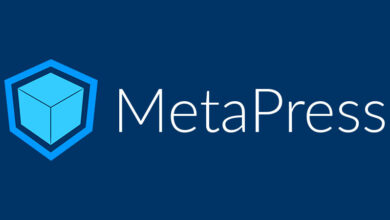Understanding the Concept of Established Abbreviation

An established abbreviation is more than just a shortened form of a word or phrase—it’s a symbol of convenience and clarity. In our fast-paced world, abbreviations help us communicate ideas quickly without losing meaning. From everyday text messages to professional documents, established abbreviations are essential tools that shape modern communication. But what exactly makes an abbreviation “established,” and how do these linguistic shortcuts become part of our everyday language? Let’s dive deep into this fascinating topic.
What Is an Established Abbreviation?

An established abbreviation is a shortened version of a word or phrase that has gained widespread acceptance over time. Unlike casual shorthand or personal abbreviations, these abbreviations are recognized across industries, social contexts, or cultures. For example, abbreviations like USA for the United States of America or ASAP for “as soon as possible” are universally understood and rarely need explanation.
Established abbreviations evolve naturally, becoming part of everyday vocabulary. Over time, they simplify complex language and enable seamless communication, especially in technical, professional, or formal settings.
The Importance of Established Abbreviations in Communication
Abbreviations play an essential role in making communication more efficient and effective. Without these shortcuts, we’d spend more time explaining simple concepts and phrases. Here are some reasons why established abbreviations matter:
- Efficiency: They save time by condensing long words and phrases into manageable forms.
- Clarity: Established abbreviations reduce the chance of misunderstanding since their meaning is widely known.
- Consistency: They maintain uniformity, especially in industries like medicine, technology, and academia.
Abbreviations also make writing concise and engaging, allowing authors to focus on core ideas without getting bogged down in lengthy terms.
Examples of Common Abbreviations
Let’s take a look at a few established abbreviations that have become part of daily conversations:
AbbreviationFull FormUsage
NASA National Aeronautics and Space Administration Space exploration and research
FYI For Your Information Informal communication
HTML HyperText Markup Language Web development
UN United Nations Global governance
RSVP Répondez s’il vous plaît (French for “Please respond”) Invitations and events
These examples reflect how established abbreviations become deeply rooted in both casual and professional language.
How Do Abbreviations Become Established?
Not every abbreviation becomes widely recognized. Some disappear over time, while others grow to be indispensable. Several factors contribute to the evolution of an abbreviation into Businesstoempire an established abbreviation:
- Frequency of Use: The more often an abbreviation is used, the more likely it becomes established.
- Institutional Endorsement: Organizations and industries often promote specific abbreviations (e.g., WHO for the World Health Organization).
- Cultural Adoption: Abbreviations that gain traction on social media or through pop culture are likely to become part of everyday language.
- Global Relevance: Abbreviations with international importance, such as the UN, tend to have a longer lifespan and greater recognition.
Types of Established Abbreviations
Abbreviations come in many forms. Some are initialisms, others are acronyms, and still, others involve truncation or contraction. Let’s explore the different types:
- Initialisms
These are abbreviations where each letter is pronounced separately.
- Examples: FBI (Federal Bureau of Investigation), ATM (Automated Teller Machine)
- Acronyms
Acronyms are pronounced as words.
- Examples: NASA (National Aeronautics and Space Administration), OPEC (Organization of the Petroleum Exporting Countries)
- Contractions and Truncations
These are formed by removing letters to shorten a word while keeping its meaning intact.
- Examples: Dr. (Doctor), Ave. (Avenue)
- Blended Abbreviations
Some established abbreviations combine parts of two or more words.
- Examples: Smog (smoke + fog), brunch (breakfast + lunch)
When Should You Use an Established Abbreviation?
While abbreviations are helpful, they must be used thoughtfully. Overusing abbreviations or using them in the wrong context can confuse readers or seem unprofessional. Here are some tips for using established abbreviations correctly:
- Know Your Audience: Ensure the abbreviation is familiar to your readers.
- Define First Use: In formal writing, always spell out the full term on the first mention, followed by the abbreviation in parentheses. Example: “HyperText Markup Language (HTML) is essential for web design.”
- Stick to the Standard: Use abbreviations consistently to maintain clarity.
When used appropriately, established abbreviations enhance your message without compromising clarity or professionalism.
The Role of Established Abbreviations in Different Industries
Different fields rely heavily on established abbreviations to communicate efficiently. Let’s explore how they are used across various sectors:
Medicine
- Abbreviations: BP (Blood Pressure), ECG (Electrocardiogram)
- Purpose: Medical professionals use abbreviations to save time and avoid miscommunication in critical situations.
Technology
- Abbreviations: CPU (Central Processing Unit), API (Application Programming Interface)
- Purpose: Shortened terms allow developers and tech enthusiasts to focus on technical concepts without getting bogged down in jargon.
Education
- Abbreviations: GPA (Grade Point Average), SAT (Scholastic Assessment Test)
- Purpose: Schools use established abbreviations to streamline academic communication.
Table: Key Points About Established Abbreviations
AspectExplanation
Clarity Reduces complexity, making communication clearer.
Time-Saving Speeds up conversations and writing.
Cultural Influence Social media and trends shape which abbreviations stick.
Professional Use Helps maintain consistency in formal settings.
Fun Facts About Established Abbreviations
- RSVP has French origins, yet it’s used worldwide for invitations.
- Laser is an acronym: “Light Amplification by Stimulated Emission of Radiation.”
- The abbreviation OK is one of the most widely recognized words in the world.
Embracing Abbreviations in Modern Communication
Established abbreviations aren’t just linguistic tools—they reflect the evolution of language. As new technologies and trends emerge, we can expect more abbreviations to enter our vocabulary. At the same time, some abbreviations from older generations might fade away, making room for newer ones.
Learning and using established abbreviations allows us to connect across industries, cultures, and communities efficiently. Whether you’re texting, writing a formal report, or attending an international conference, mastering abbreviations helps you stay sharp and engaged.
Final Thoughts on Established Abbreviation
The beauty of an established abbreviation lies in its simplicity and impact. These abbreviations act as bridges between ideas, people, and industries, making communication smoother and faster. Whether it’s NASA, FYI, or a lesser-known abbreviation in your field, these shortcuts help us express complex thoughts with ease.
As language continues to evolve, so will the abbreviations we use. Some may disappear, while others will become deeply ingrained in our conversations. Understanding and using established abbreviations effectively ensures that you remain clear, professional, and connected, no matter where you are or who you’re communicating with. So, the next time you come across an abbreviation, remember: it’s more than just letters—it’s a powerful tool for connection and clarity.





